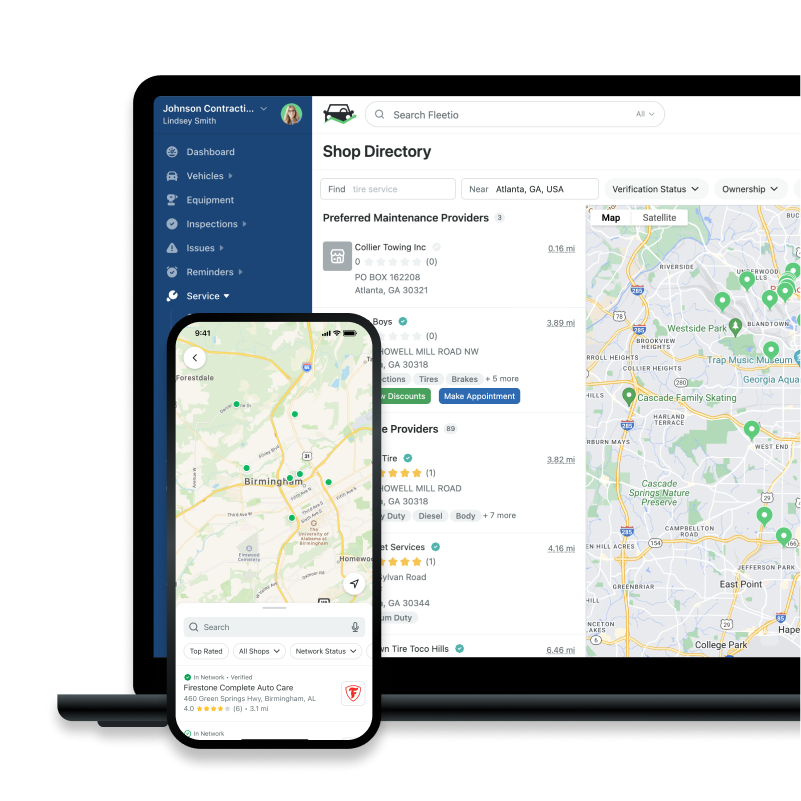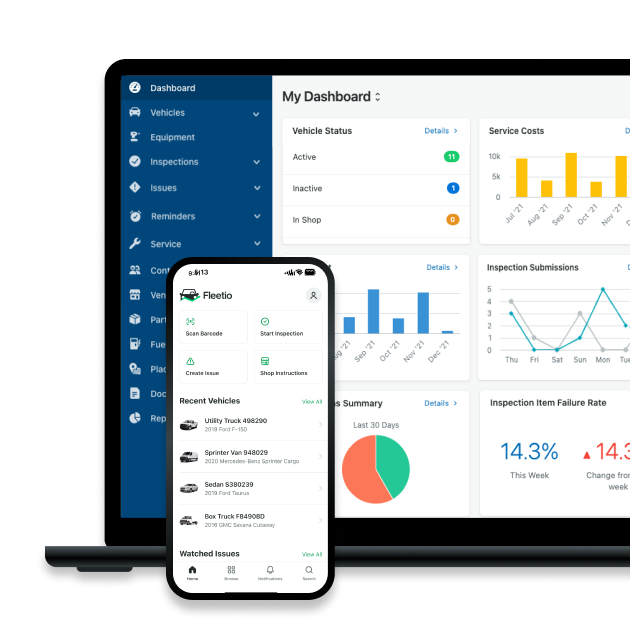Telematics Capabilities vs. Fleet Maintenance Software
To the uninformed, fleet tracking software and fleet management software are interchangeable. But, in reality, FMSs are capable of far more than just monitoring vehicles.
Mar 6, 2024
5 min read

At organizations where fleet operations are underappreciated by executives, fleet managers often have to contend with an “if it ain’t broke, don’t fix it” mentality to get the tools they need. When spreadsheets have been good enough for ages, it’s common for those at the top of the totem pole to require a lot of convincing to get behind fleet management software (FMS). This hurdle even occurs at organizations that have already invested in some forms of fleet technology.
Case in point, it’s typical for higher-ups unfamiliar with fleet operations to view fleet tracking solutions offered by telematics providers as everything their organization would ever need in terms of fleet software. But, as any fleet manager will tell you, fleet management involves a whole lot more than just keeping tabs on vehicles.
To help fleet managers more effectively advocate for the tools their operations demand, let’s explore what separates an FMS from most fleet tracking solutions developed by telematics providers.
The Reason for Telematics
At their core, fleet tracking solutions are designed to display information captured by an organization’s fleet telematics devices. By showing real-time and historic vehicle location data, fleet tracking software can help fleet managers curb unauthorized vehicle use and fuel waste. Spotlighting instances of potentially risky driving behavior (e.g. speeding, harsh braking, sudden acceleration, etc.) allows fleet managers to hold their drivers accountable when they violate safety protocols. And alerting fleet managers when engine diagnostics are amiss enables technicians to start preparing to receive a vehicle while it’s out in the field, accelerating turnaround time. All of these functions provide considerable value to fleets.
The Reason for Fleet Maintenance Software
That being said, fleet management entails so much more than keeping a watchful eye over the health and utilization of your vehicles. Maintenance is a crucial aspect of operating a fleet, but fleet tracking solutions weren’t built to support preventive maintenance (PM) scheduling or management of digital work orders. Tracking expenses is a huge part of being a fleet manager, but good luck trying to generate a fleet costs report from software intended to display GPS pings on a map. These inabilities aren’t really shortcomings, but rather functions that exist beyond the scope of most fleet tracking solutions.
This difference in breadth is what distinguishes fleet management software from fleet tracking solutions. FMSs are comprehensive platforms that allow fleet managers to view, analyze and improve every aspect of their fleet operations. Instead of primarily being a means of displaying already captured information, FMSs are single sources of truth that fleet personnel input information into while performing their work.
Expand your FMS with integrations
Through integrations, you can funnel all of your fleet data into a single source of truth. Connect with telematics, fuel cards, repair shops and more to attain ever greater visibility.
Learn moreCollaboration
Up to now, we’ve mostly focused on how different fleet software solutions can bring value to fleet managers, but it’s important to note that FMSs benefit fleet personnel of all roles. By making it easy for drivers and technicians to relay information, FMSs facilitate levels of collaboration that are simply impossible to replicate with paper, spreadsheets and less sophisticated fleet software.
Information bottlenecks can grind fleet productivity to a halt, and when an organization relies on low-tech fleet management tools, they occur all the time. Any process that hinges on people filling out paper forms, dropping off those forms and transcribing those forms (accurately) is prone to delays and errors. These time losses add up over time, especially with cross-functional workflows that require hand off between different roles.
But with an FMS, fleet personnel are able to exchange information instantly. The second a driver spots a vehicle defect during an inspection, they can create an issue that details everything a technician would want to know about that problem. As soon as that issue is submitted, a fleet manager receives a notification informing them of the issue so they can create a work order and assign it to a technician whose availability and skill set matches the work that needs to be done. And from there, the assigned technician is immediately alerted to the work order so they can get ready to work.
This seamless hand off from driver to fleet manager to technician enables fleets to respond to the needs of their vehicles quickly, which helps to reduce unplanned downtime to a minimum.
Integrations
As mentioned earlier, fleet tracking solutions are primarily intended to display information captured by an organization’s telematics devices. This focus on a narrow slice of information stands in stark contrast to FMSs. Thanks to integrations, FMSs can automatically receive information from a wide variety of sources, including telematics devices. That last point is especially important to note for those who view telematics devices and FMSs from a “one or the other” perspective.
Leveraging Both Fleet Maintenance Software and Telematics
By feeding your telematics data into your FMS, you can still view all of the location, driving behavior and engine diagnostic data you have access to with your fleet tracking solution. The big difference is that, with an FMS, you get to view all that information in context. If you see that a vehicle is taking an unauthorized route to a job site, you can get an estimate of how much that inefficiency is costing you by viewing its cost per mile. Or if you get a notification that a vehicle’s engine diagnostics are amiss, you can view that vehicle’s service history to see if it’s experiencing a recurring issue.
Thanks to integrations, FMSs can also receive information from fuel cards to spare drivers from entering receipts every time they stop at a pump. This also makes it easier for fleet managers to track their fuel costs using their FMS’ built-in reporting tools. Additionally, FMSs also benefit greatly from integrations with maintenance shops. Ordinarily, communicating with repair shops over work approvals involves seemingly endless games of phone tag and slow, back and forth emails. But thanks to integrations, fleet managers can view, manage and approve or deny all third-party service work performed on their vehicles from their FMS. This not only increases efficiency, but eliminates unpleasant surprise bills as well.
Ultimately, fleets benefit the most by having both data from telematics devices and a capable FMS to feed that data into. So instead of considering telematics and fleet management software and asking “Which?” fleets should really be thinking about how they can leverage both technologies to their fullest.
Oversee all aspects of your operations
Fleetio provides the ultimate platform for keeping your vehicles healthy and your expenses in the black. Discover how you can take your preventive maintenance to the next level.
Learn more
Fleet Content Specialist
Through interviews, blog posts and webinars, Alex covers the tactics and technologies exceptional fleet managers use to achieve results. By sharing their success stories, his work aims to inform and inspire fleet professionals of all stripes.
LinkedIn|View articles by Alex BorgReady to get started?
Join thousands of satisfied customers using Fleetio
Questions? Call us at 1-800-975-5304

